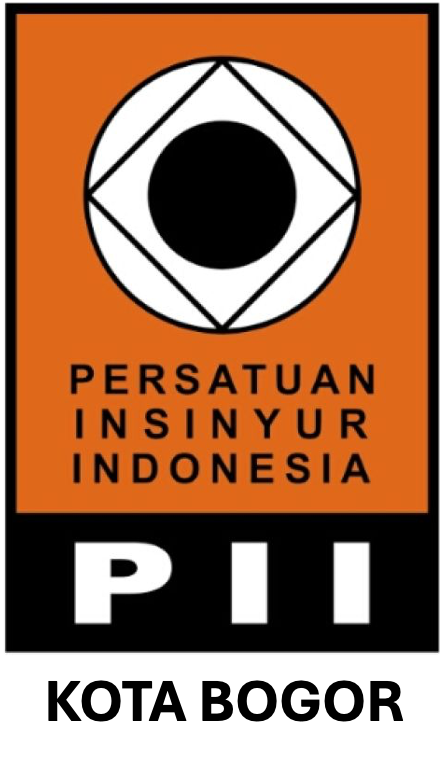Schiff Base Synthetic Coating from The Chitosan Acylation of Green Mussel Shell (Perna viridis) as A Corrosion Inhibitor in Reinforcing Steel
Abstract
Reinforced concrete is widely used in construction implementation in Indonesia. The use of reinforcing steel as a structural material has the potential to experience corrosion. A Schiff base is one of the compounds considered a potential corrosion inhibitor. Green mussel (Perna viridis) contains chitosan which can produce chitosan Schiff base. This study aimed to analyze chitosan, Schiff base, optimum inhibitor concentration, and morphological structure. This research consisted of extraction and acylation transformation stages, corrosion rate measurement, and SEM testing. This research resulted in the degree of deacetylation of chitosan from the FT-IR spectra of 53.71%. Chitosan Schiff base from green mussel shells was successfully synthesized as much as 188.41 g. The optimum corrosion rate is found at the inhibitor concentration of 1500 ppm, with the highest efficiency level of 91.84%. The results of SEM testing on treated steel samples yielded fewer corrosion products in the form of uniform corrosion and pitting corrosion than untreated steel samples. This result shows that the chitosan Schiff base inhibitor from the optimum concentration of green mussel shells effectively inhibits the corrosion rate.
Downloads
References
[2] Quraishi MA, Nayak DK, Kumar R, Kumar V. Corrosion of reinforced steel in concrete and its control: an overview. Journal of Steel Structures & Construction. 2017; 3(1): 1-6.
[3] Yu B, Liu J, Chen Z. Probabilistic evaluation method for corrosion risk of steel reinforcement based on concrete resistivity. Journal of Construction and Building Materials. 2017; 138(1): 101-113.
[4] Saugi W. Effect of physical, chemical, and biological factors of the medium on the corrosion rate of iron. Borneo Journal of Science and Mathematic Education. 2021; 1(1): 33-60.
[5] Verma C, Ebenso EE, Bahadur I, Quraishi MA. An overview on plant extracts as environmental sustainable and green corrosion inhibitors for metals and alloys in aggressive corrosive media. Journal of Molecular Liquids. 2018; 266(1): 577-590.
[6] Verma C, Ebenso EE, Quraishi MA. Ionic liquids as green and sustainable corrosion inhibitors for metals and alloys: an overview. Journal of Molecular Liquids. 2017; 233(1): 403-414.
[7] Aditama RY, Ginting E, Syafriadi. Effectiveness of papaya leaf extract (Carica papaya l) as an inhibitor on AISI 1020 carbon steel in 3% NaCl corrosive medium. JTAF. 2019; 7(1): 69-76.
[8] Sedik A, Lerari D, Salci A, Athmani S, Bachari K, Gecibesler IH, Solmaz R. Dardagan fruit extract as eco-friendly corrosion inhibitor for mild steel in 1 M HCL: electrochemical and surface morphological studies. Journal of the Taiwan Institute of Chemical Engineers. 2020; 107(1): 189-200.
[9] Tan B, He J, Zhang S, Xu C, Chen S, Liu H, Li W. Insight into anti-corrosion nature of betel leaves water extracts as the novel and eco-friendly inhibitors. Journal of Colloid and Interface Science. 2021; 585(1): 287-301.
[10] Stiadi Y, Arief S, Aziz H, Efsi, Mai, Emriadi. Corrosion inhibition of mild steel using natural materials in hydrochloric acid medium. JKR. 2019; 10(1): 51-65.
[11] Ansari KR, Chauhan DS, Quraishi MA, Mazumder MAJ, Singh A. Chitosan Schiff base: an environmentally benign biological macromolecule as a new corrosion inhibitor for oil & gas industries. International Journal of Biological Macromolecules. 2020; 144(1): 305-315.
[12] Messali M, Larouj M, Lgaz H, Rezki N, Al-Blewi FF, Aouad MR, Chaouiki A, Salghi R, Chung IM. A new schiff base derivative as an effective corrosion inhibitor for mild steel in acidic media: experimental and computer simulations studies. Journal of Molecular Structure. 2018; 1168(1): 39-48.
[13] Arsyi NZ, Nurjannah E, Nurahlina D, Budiyanti E. Characterization of nano chitosan from green mussel shells by ionic gelation method. JTBA. 2018; 2(2): 106-111.
[14] Harmami H, Ulfin I, Sakinah AH, Ni’mah YL. Water-soluble chitosan from shrimp and mussel shells as corrosion inhibitor on tinplate in 2% NaCl. Malaysian Journal of Fundamental and Applied Sciences. 2019; 15(2): 212-217.
[15] Thilagar G, Sasikumar T, Arumugam R, Samuthirapandian R. Preparation and characterization of chitosan from Perna viridis (Linnaeus, 1758) shell waste as raw material. Research Journal of Pharmacy and Technology. 2021; 14(5): 2757-2762.
[16] [WWF] World Wide Fund for Nature Indonesia. 2019. Indonesian Fisheries and Marine Products Production Catalog 2014-2018. Jakarta: WWF Indonesia Fisheries Team.
[17] A’yuni Q, Widianti A, Ulfindrayani IF, Prayogi YR, Arif S, Ningsih AFL. Utilization of clam shell waste as quality animal feed in Tambak Cemandi Village, Sidoarjo. JSSD. 2019; 2(2): 61-69.
[18] Ismail R, Fitriyana DF, Santosa YI, Nugroho S, Hakim AJ, Mulqi MSA, Jamari J, Bayuseno AP. The potential use of green mussel (Perna Viridis) shells for synthetic calcium carbonate polymorphs in biomaterials. Journal of Crystal Growth. 2021; 572(1): 126-133.
[19] Harjanti RS. Chitosan from shrimp waste as a preservative for fried chicken. J. Rek. Pros. 2018; 8(1): 12-19.
[20] Sitanggang BC, Wirjosentono B, Ginting M. Preparationof fe-chitosan schiff base complex. Journal of Chemical Education. 2018; 8(3): 203-206.
[21] [ASTM] American Society for Testing and Materials. ASTM G1-03:2017 Standard Practice for Preparing, Cleaning, and Evaluating Corrosion Test Specimens. 2017.
[22] [ASTM] American Society for Testing and Materials. ASTM G31-72:2013 Standard Practice for Laboratory Immersion Corrosion Testing of Metals. 2013.
[23] Zaeni A, Safitri E, Fuadah B, Sudiana IN. Microwave-assisted hydrolysis of chitosan from shrimp shell waste for glucosammine hydrochlorid production. Journal of Physics: Conference Series. 2017; 846(1): 1-8.
[24] Komi DEA, Hamblin M. Chitin and chitosan: production and application of versatile biomedical nanomaterials. International Journal of Advanced Research. 2016; 4(3): 411-427.
[25] Sirumapea L, Asmiyanti, Khoirunisa A. Synthesis and characterization of antibacterial compounds Fe(III) complexes with schiff base derivatives. IJPST. 2015; 2(2): 49-54.
[26] Priyotomo G, Sitepu HS, Dwiyanti Y. Effect of adding taro leaf extract inhibitor concentration on the corrosion rate of 5L X-52 fire steel in 0.5 M H2SO4 solution. Widyariset. 2019; 5(1): 30-36.
[27] Arif MN, Sinardi, Soewondo P. Comparative study of green mussel shell and crab shell chitosan by chemical preparation as natural coagulant. JTLITB. 2013; 19(1): 64-74.
[28] Bahlakeh G, Ramezanzadeh B, Ramezanzadeh M. The role of chrome and zinc free-based neodymium oxide nanofilm on adhesion and corrosion protection properties of polyester/melamine coating on mild steel: experimental and molecular dynamics simulation study. Journal of Cleaner Production. 2019; 210(3): 872-886.
[29] Pessu F, Hua Y, Barker R, Neville A. A study of the pitting and uniform corrosion characteristics of X65 carbon steel in different H2S-CO2-containing environments. The Journal of Science and Engineering. 2018; 74(8): 886-902.
[30] Grachev V, Rozen AA, Vasilievich G. Mechanism of pitting corrosion protection of metals and alloys. Oriental Journal of Chemistry. 2016; 32(2): 845-850.
Copyright (c) 2024 Jurnal Teknik Sipil dan Lingkungan

This work is licensed under a Creative Commons Attribution-NonCommercial-NoDerivatives 4.0 International License.
Authors who publish with Jurnal Teknik Sipil dan Lingkungan, JSIL agree to the following terms:
a. Authors retain copyright and grant the journal right of first publication with the work simultaneously licensed under a Creative Commons Attribution License that allows others to share the work with an acknowledgment of the work's authorship and initial publication in this journal.
b. Authors are able to enter into separate, additional contractual arrangements for the non-exclusive distribution of the journal's published version of the work (e.g., post it to an institutional repository or publish it in a book), with an acknowledgment of its initial publication in this journal.
c. Authors are permitted and encouraged to post their work online (e.g., in institutional repositories or on their website) prior to and during the submission process, as it can lead to productive exchanges, as well as earlier and greater citation of published work (See The Effect of Open Access).











